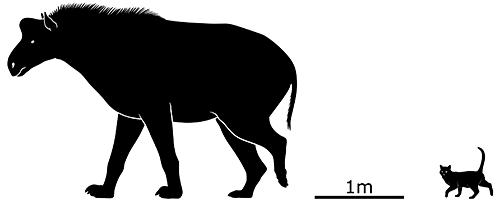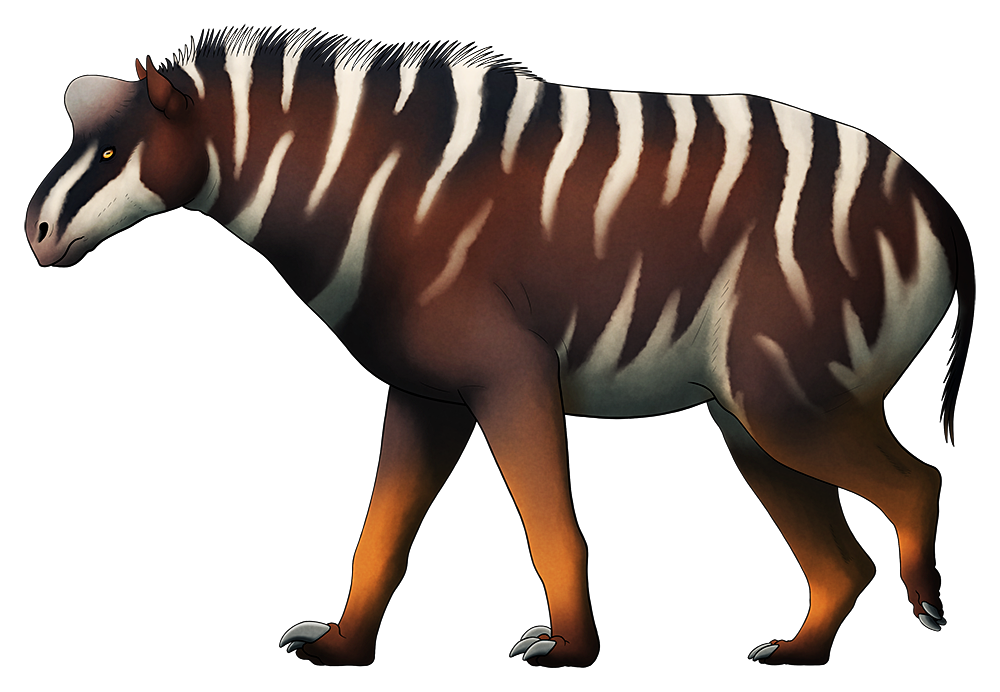Much like Platybelodon from a few entries back, chalicotheres look like a fictional creature design rather than something that actually existed.
These animals were odd-toed ungulates related to modern horses, tapirs, and rhinos, who ranged across Africa, Eurasia, and North America for a large chunk of the Cenozoic. Instead of hooves they had large claws on their feet, and they appear to have occupied the same sort of ecological niche as ground sloths or therizinosaurs – sitting or rearing up on their hind legs to browse on high vegetation, using the hook-like claws on their forelimbs to pull down and strip branches.
There were two different lineages of chalicotheres which developed along slightly different evolutionary paths: the knuckle-walking gorilla-like chalicotheriines and the more goat-like schizotheriines.
Tylocephalonyx skinneri here was one of the latter group, known from the Miocene of North America about 16-13 million years ago. Standing about 2m tall at the shoulder (6’6″), it had the same sort of chunky body as other schizotheriines and walked around with its large front claws held up to keep them raised away from the ground.
But there was also an unusual feature on its otherwise rather horse-like head – a large bony dome on top of its skull, like a mammalian version of a pachycephalosaur.
It probably used its dome in the same way as the dinosaurs it convergently resembled, headbutting or flankbutting in fights with each other.


